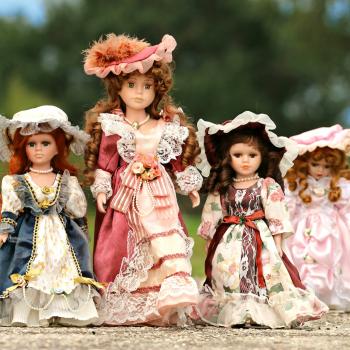A Pew Research headline popped up on my Facebook feed recently. For First Time in Modern Era, Living With Parents Edges Out Other Living Arrangements for 18- to 34-Year-Olds, it declared. The headline positions the article (and the data it highlights) squarely within the widespread and often-fraught media discussion of the “high” number of Millennials living with their parents, and the “low” number of Millennials marrying. And so I clicked through. I found this graph:

Look at the data in the graph. Now look back at the headline. Notice anything? The portion of young adults living with their parents was 30% in 1890, 35% in 1940, 20% in 1960, and 32.1% in 2014. The headline suggests to the average reader that the number of young adults living with their parents is unprecedented when in fact it is not. What is actually unprecedented is the percentage of young adults who are married or cohabitating in their own households—45% in 1980, 46% in 1940, 62% in 1960, and 31.6% in in 1940. And even then, the current number (31.6%) seems less out of place when we view it against rates a century ago (45-46%) than it does when we view it against the all-time high of 1960 (62%).
People often compare modern statistics to those of the 1950s—particularly in the realm of marriage and the family—as though those 1950s statistics represent some sort of unchanging pre-modern norm. In actual fact, the 1950s was a serious aberration from both what came before and what came afterwards, for a number of reasons. People had just come out of two decades of depression and war, and were ready to settle down to some sort of normalcy. Both homeownership and female domestic life were encouraged as part of the Cold War effort (women were pushed out of the workforce and any deviance from these new domestic norms was sanctioned as subversive and potential dangerous). The U.S. economy, benefiting from lack of competition that resulted from global devastation that left the U.S. untouched, soared. Oh, and every young man who had been in the army—which was most young men, frankly—had access to free college.
A combination of high wages, good jobs, free college, cheap housing, and strong societal pressure to marry young resulted in marriage rates unseen either before or after the decade, both in terms of the number of young adults married and in terms of the ages at which young adults were married. Take a look at this graph:

Now let’s look back at the original graph:

If you erase the 1960 bar, the numbers appear very much in line, with one exception—fewer young adults are married or cohabitation in their own household and more young adults are living alone, single parents, or other heads of households. I’d like to see those numbers broken down, because it’s quite possible that the higher divorce rate (and higher rate of out-of-wedlock births) are driving that difference. This isn’t necessarily a bad thing, because it means fewer couples are forced to remain married when they don’t want to be, and fewer women feel pressured by pregnancy into marriages they don’t want.
But this issue isn’t the one highlighted in the title of the graph or in the article headline. Instead, the percentage of young adults living with their parents—which is still lower than the percentage before WWII—becomes the headline. Consider that this data could have been headlined More Young Adults Lived with Their Parents in 1940 than Today. A headline like that would have pushed back against some of the sky-is-falling rhetoric I hear, while drawing interesting comparisons between today’s economic conditions and the somewhat similar conditions of 1940. But no. That headline might not get clicks. That headline gets squashed.
I did find a much more even article on Pew, here.

This graph adds some fascinating perspective, no?















